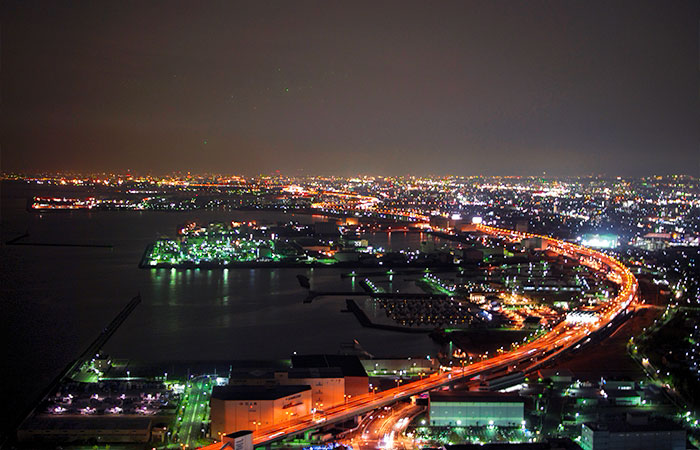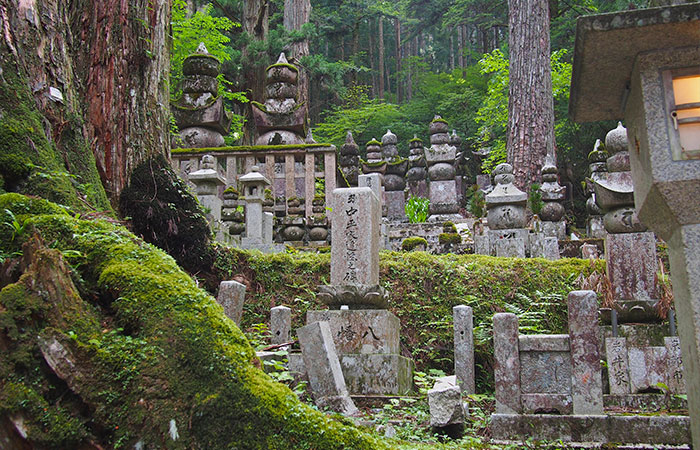Kansai

In a country so devoid of flat land, the great rice-growing plains of Kansai, the district around ?saka and Kyoto, are imbued with an almost mystical significance. This was where the nation first began to take root, in the region known as Yamato, and where a distinct Japanese civilization evolved from the strong cultural influences of China and Korea. Kansai people are tremendously proud of their pivotal role in Japanese history and tend to look down on Tokyo, which they regard as an uncivilized upstart. Today, its diverse legacy of temples, shrines and castles, combined with an increasing array of exciting modern architecture, makes Kansai one of Japan's top tourist destinations. The former imperial capitals of Kyoto and Nara, with their enduring historical and cultural importance, are naturally a major part of the region's appeal.
Osaka, 3 hrs. by Shinkansen super express or 1 hr. by air from Tokyo, is Japan's third-largest city and the commercial and industrial hub for western Japan. Situated at the mouth of the Yodo River emptying into Osaka Bay, Osaka has a network of canals that crisscross under its many busy streets, which have played an important role in the city's prosperity.
As a classical city, it is very proud of its being the origin of Bunraku puppet theatre. The Osaka Bay area is a must for visitors as an emerging centre of the trendiest in urban attractions, include Osaka Aquarium Kaiyukan and Universal Sudios Japan, a Hollywood based theme park, and many more.
The absolute highlight is Osaka Castle, once the largest in Japan, built in 1586 by Toyotomi Hideyoshi. The present five-storied fortress, a copy of the original, contains many historical art objects and documents related to the Toyotomi family and Osaka of the old.

Osaka Bay at Night

Osaka Aquarium Kaiyukan

Universal Studios Japan

Osaka Castle
Nakanoshima, on a small delta between divergent streams of the Yodo River, is the civic centre. At its end lies Tenmangu Shrine, dedicated to Michizane Sugawara, a noted scholar. Nearby is the Tenjinbashi Shopping Street which has long prospered by catering to worshippers and visitors to the local shrine. A walk along its shopping arcade provides a glimpse into the daily lifestyle of the local residents.
Kobe, 30 min. by rail from Osaka, is a major seaport which has developed at a rapid pace since the Meiji Restoration began in 1868. A city of hills, Kobe has many narrow paths and walkways that wind up and down the Rokko foothills that form the city's backdrop. One of Japan's main ports, along with Yokohama, Kobe harbors a fascinating foreign residential enclave that is great for strolling.
Kobe Port Tower, soaring 108 m., is beautifully lit up in the evening. Across the way is Kobe Harbourland, a newly emerging waterfront development. It bustles with throngs of visitors who enjoy the famed night view of this great port city well into the evening hours.

Nakanoshima-Osaka

Tenmangu Shrine

Kobe Port Tower

Kobe Harborland
Another major attraction in western Japan is located in Himeji City. Himeji Castle is one of the most beautiful castles to be found in the nation. With its twisting paths through the castle grounds leading past alabaster-plastered walls and the original buildings-preserved as national treasures-a visit here is not to be missed.
For a different unforgettable experience, stay at the monastery at the summit of Mt. Koya, a 2-hr. rail ride from Osaka. Founded in 816 by Kobo Daishi, the great exponent of the Shingon sect of Buddhism, the monastery is comprised of over 120 temples, of which 53 offer lodgings and vegetarian meals at reasonable prices. The monastery is visited by 1 million pilgrims annually.

Himeji Castle

Himeji Castle Ground

Mt. Koya Monastery







